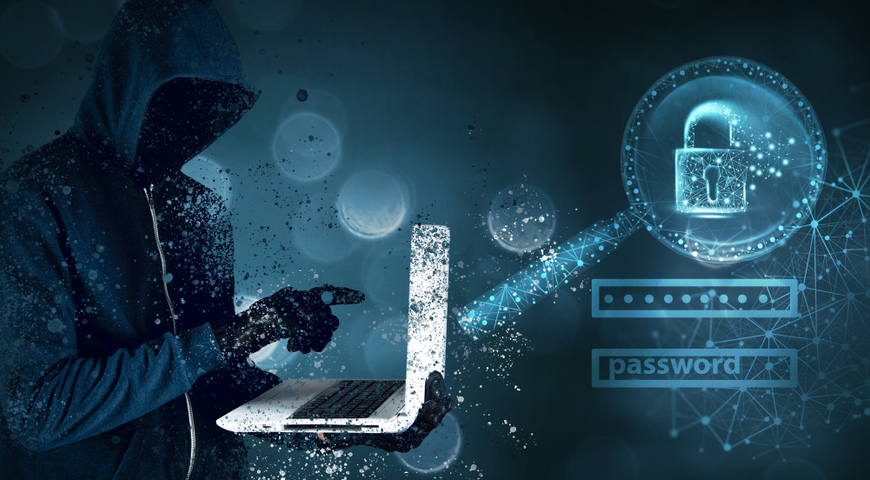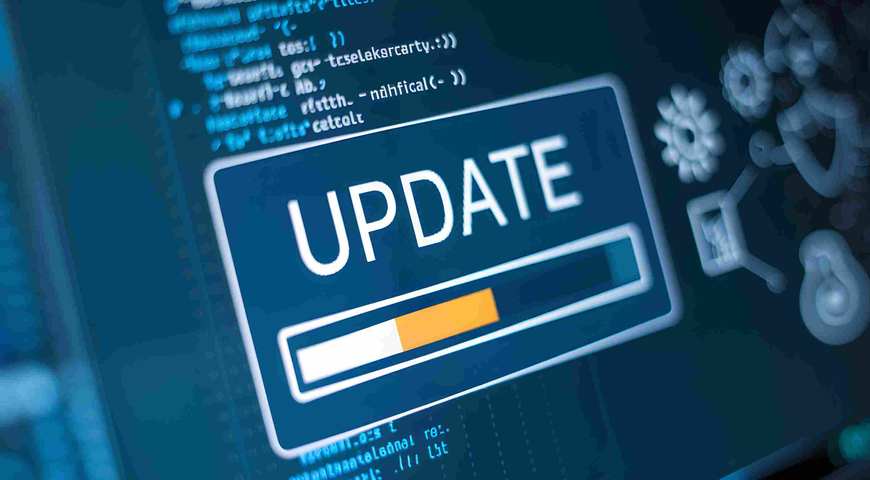
Cyberthreats are a constant concern for individuals and home users. From data breaches to identity theft, the risks are real and can have devastating consequences. As cybercriminals become more sophisticated, it's crucial to stay informed and proactive about protecting your digital life. In this blog post, we'll share essential cybersecurity best practices to help you safeguard your devices, personal files and data, and online activities.
Understanding the basics of personal cybersecurity
Before diving into specific tips, it's important to grasp the fundamentals of cybersecurity. At its core, cybersecurity involves protecting internet-connected systems, including hardware, software and data, from digital attacks. Common threats include malware, phishing, ransomware and hacking attempts. By understanding these risks and implementing proper security measures, you can significantly reduce your vulnerability to cyberattacks.
Personal cybersecurity is important as we do much more online these days and sometimes share too much information. Next to this is that cyberthreats are evolving and becoming more sophisticated by the day, as attackers are actively seeking to exploit vulnerabilities by using AI.
What are the best cybersecurity practices for individuals?
Protecting your personal devices
Your devices are more than just gadgets; they are your digital diaries holding your most intimate and personal information, such as photos and financial data. They give you access to the world wide web to enjoy yourself, work and other things you do in your daily digital life. Protecting and securing those devices is important because, from smartphones to laptops, they are prime targets for cybercriminals.
Securing your devices, your computer, laptop, smartphone and tablet, is vitally important as they are the gateways to your most personal information, and protecting them can be done in several ways. To transform your devices to keep your digital life yours, here are some key steps to take:
- Install and regularly update antivirus and anti-malware software from a reputable provider, such as Acronis True Image.
- Make sure to enable automatic updates for your operating system to patch security vulnerabilities.
- Use a firewall to control and monitor network traffic.
- Encrypt sensitive data on your devices.
- Regularly back up important files to a secure location or to the cloud.
Protecting personal data and privacy
In the digital age, protecting your personal data and privacy is crucial but also tricky, as cybercriminals are trying to trick you into revealing your personal information. Every click, share and upload can potentially expose your most sensitive data.
Social media is part of our daily life. Nowadays, more than 63% of the world’s population is using social media and, on average, for more than two hours a day. On these digital outlets, we expose a lot of personal data and information; think of your birthday, where you live or specific photos. All this can be found by anybody if you have not changed your privacy settings in your social media channel or channels.
Make sure you protect your personal data and keep your privacy; some best practices include:
- Be selective about the information you share online.
- Adjust the privacy settings on social media and other online accounts.
- Avoid oversharing sensitive details like your full address or financial information.
- Regularly review and delete unused online accounts.
- Consider using privacy-focused tools like encrypted messaging apps or browsers.
As we are doing so much online, we also store and share files through that medium. It is important to think of how you can protect those precious photos, videos and documents. When storing and sharing files online it’s important to:
- Use reputable cloud storage services that use encryption.
- Set up access controls and permissions to limit who can access or edit your files.
- Avoid sharing sensitive information via email or public links.
- Encrypt files before uploading them to the cloud.
Strong password management
Imagine your password as the only key to a vault that contains all your digital existence. Weak or reused passwords are like you have opened your vault and left it wide open, and that is a common vulnerability that cybercriminals exploit.
Probably you are thinking, “How long does it take to crack my password?” According to our friends at Security.org, a standard eight-character password can be cracked almost instantaneously. Want to add 22 minutes to the time to crack? Include a capital letter. Want more protection? Adding in a special character combined with a capital letter takes one hour to crack. That’s kind of scary, isn’t it? But, by making passwords unique with different kinds of characters and numbers is helping to make it harder for bad actors to crack them.
What can be useful is a password manager, as it helps you create passwords that can be 30+ characters long, including using specific, special characters and numbers. You can easily create unique passwords without the fuss of having to remember them.
When creating and using passwords, you need to keep the following in mind to keep your accounts protected:
- Use strong and unique passwords for each account.
- Avoid using easily password that can be guessed like birthdays or pet names.
- Consider using a password manager to securely store and generate complex passwords.
- Regularly update your passwords, especially if you suspect a breach.
Regular backups
Data backups are copies of your essential data (e.g., work files, photos, payment information) saved on an external physical storage device or in the cloud. Disk-image backups are copies of your entire system including the OS, applications, and data.
Full-image backups can serve for disaster recovery or help you migrate onto a new device.
It is recommended that you back up your device on a daily or weekly basis, depending on how much data you chose to lose if an unforeseen event happens. It is important to back up regularly and, preferably, automate the process.
Use antivirus software
Keeping track of online threats is hard work if you do it alone. Instead, you can install antivirus software on all of your devices and leave the hassle to a paid solution.
Acronis True Image lets you easily schedule automatic data backups while detecting and stopping attacks in real time without the need for your constant attention. You can initiate antivirus scans, encrypt communication data, and secure logins intuitively through an all-in-one interface.
Two-factor authentication (2FA)
Two-factor authentication (2FA) adds a crucial second layer of protection to your accounts, requiring both your password and a second verification method. This simple security measure helps to block attacks and keep the bad guys out.
What 2FA can do for you and your data:
- Protects your accounts even if passwords are compromised.
- Verifies your identity through something you know (password) and something you have (phone / security key).
- Essential for email, banking, social media and other sensitive accounts.
- It only takes minutes to set up, but prevents hours of dealing with security breaches.
- Want to learn more about 2FA? Read our blog.
Safe internet browsing habits
As we are nowadays always online — for example, browsing the internet and reading blog posts like this from a device with an internet connection — it's essential to practice safe habits to protect your data and privacy. Every website you visit and every link you click could be a potential threat.
Phishing techniques are more advanced today and are using disguises to trick you into revealing your personal information. Sometimes it gets harder and harder to recognize phishing attacks. Below you can see the typical things that are being done with phishing emails, messages, phone calls or even letters:
- They look like they are from trusted sources, as they use official logos, similar email formatting and include urgent language that can trigger an emotional response.
- They typically use psychological tricks to make you act quickly, like creating a sense of urgency or fear or claiming that your account will be suspended.
- When you accidentally click on a link taking you to a fake website that looks identical to the real one, and the site asks you to “confirm” your personal details or information.
Make sure you protect yourself so you can spot and avoid these and other online tricks. Some safe habits to practice include:
- Avoiding clicking on suspicious links or downloading attachments from unknown sources or that friend you do not know.
- Using a secure web browser with built-in security features.
- Installing or enabling a pop-up blocker to prevent unwanted ads and potential malware.
- Only visiting websites with HTTPS encryption; these are indicated by a lock icon in the address bar of your browser.
- Being cautious when using public Wi-Fi networks. Consider using a virtual private network (VPN) for extra security.
Safe online transactions
As we shop more online, pay digitally or do banking transactions, your financial information needs to be protected. Bad guys are also trying to trick you into revealing your payment details. It’s important to make sure you know how to shop, pay and transfer money online with the confidence of a cybersecurity expert. To make sure that your hard-earned money stays exactly where it belongs:
- Only make transactions on secure, trusted websites with HTTPS encryption. Those are indicated by a lock icon in the address bar of your browser.
- Look for trusted payment processors like PayPal, Stripe, Mollie or Square.
- Make sure the payment page has a valid SSL certificate.
- Avoid saving payment details on websites or in browsers.
- Use credit cards instead of debit cards for better fraud protection.
- Regularly monitor your bank statements for suspicious activity.
- Consider using virtual credit card numbers for added security.
Mobile device security
Smartphones are swiftly becoming the all-in-one solution for tech enthusiasts. You can work, shop, bank and even track your life balance through them.
If somebody steals or compromises your smartphone, they can access your online accounts, steal your identity, steal money from you and destroy the personal data you hold dear (e.g., photos, messages, notes).
What’s more, hackers can also use your phone to scam other people.
To best secure your mobile device, you should protect it with a password, PIN, or a passphrase. Additionally, set the device to lock after a short window of inactivity, install mobile security software, enable remote data wiping, turn off Bluetooth and Wi-Fi when out of use, and ensure your device doesn’t connect to open Wi-Fi networks automatically. It is also important that you back up your mobile device as well to ensure you never lose your previous photos, contacts, etc.
Recognizing and responding to cyberthreats
Despite your best efforts and the tips mentioned above, you may still encounter cyberthreats. They constantly evolve their tactics to catch you off guard. From more sophisticated phishing emails to malware, these digital dangers are always lurking and trying to attack you.
It's crucial to recognize the signs that help you identify, anticipate and understand how to respond on potential threats before they can do harm:
- Take care with unsolicited emails, calls or messages requesting personal information.
- Watch for signs of malware like slow performance, pop ups or ransom demands.
- If you suspect a breach, immediately change your password(s) and contact relevant websites and / or authorities.
- Report any suspicious activity to the appropriate organizations or even law enforcement.
- Regularly educate yourself on the latest cyberthreats and prevention techniques.
Staying updated on cybersecurity trends
As technology evolves rapidly, so do cyberthreats. The world of cybersecurity is a fast-moving battlefield where the defense strategy is to counter the vulnerabilities of today. Staying informed isn’t just recommended, it’s essential.
Discover how to keep your finger on the pulse of threats, cutting-edge protection and cybercriminal tactics:
- Follow reputable cybersecurity blogs, newsletters or social media accounts for trends and updates on cybersecurity, such as the Acronis blog.
- Attend webinars or workshops to learn about the latest security best practices.
- Regularly update your knowledge of new threats and prevention strategies.
- Consider investing in advanced cybersecurity solutions like Acronis True Image for comprehensive protection and be sure to keep the solution up to date.
Summary and key takeaways
Cybersecurity is an ongoing responsibility that requires vigilance and proactive measures. By implementing these essential best practices, you can significantly enhance your digital security and protect your devices, personal data and information, and online activities from cyberthreats. Make sure to remember to:
- Secure your personal devices with antivirus software, updates and backups.
- Practice safe internet browsing habits and be cautious of suspicious content.
- Use strong, unique passwords and enable two-factor authentication.
- Protect your personal data and privacy by being selective about what you share online.
- Take extra precautions when making online transactions.
- Stay informed about the latest cybersecurity trends and best practices.
By following these guidelines and investing in comprehensive cybersecurity solutions like Acronis True Image, you can enjoy greater peace of mind in your digital life. Stay safe out there!
Acronis True Image provides the ultimate personal cyber protection
Every data protection strategy needs a strong antivirus. Even if you are mindful of your browsing habits, a cybersecurity solution adds extra layers of defense to foil snooping third parties.
Acronis True Image (formerly Acronis Cyber Protect Home Office) blocks malicious attacks in real time without human supervision. You can also scan your device for existing infections, rid your system of them, and reduce the risk of data breaches and unwanted cyberattacks in the future.
Acronis True Image provides a unique integration of reliable backup and cutting-edge anti-malware technologies that safeguard data against all of today’s threats — disk failure, accidental deletion, loss and theft, as well as cybercriminal attacks. PCMag described it as “an all-encompassing tragedy prevention solution” in their “Editor’s Choice” review.
With Acronis True Image, individuals and small businesses alike can back up their data — including OSs, applications, settings, files and Microsoft 365 accounts to local drives, external hard drives, NAS and the Acronis cloud. In addition, Acronis Cyber Protect Home Office stops cyberattacks — including attacks resulting from zero-day vulnerabilities — from harming both backup and device data with real-time protection, vulnerability assessment, on-demand antivirus scans, web-filtering, ransomware protection, and a cryptomining blocker. In case of a disaster, data can be easily recovered.
Protect yourself from all threats, and get Acronis True Image today!
The most reliable, efficient and easy AI-based cyber protection
About Acronis
A Swiss company founded in Singapore in 2003, Acronis has 15 offices worldwide and employees in 50+ countries. Acronis Cyber Protect Cloud is available in 26 languages in 150 countries and is used by over 21,000 service providers to protect over 750,000 businesses.



